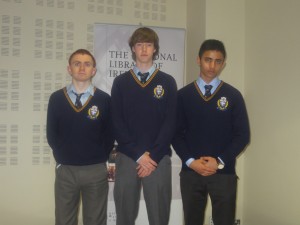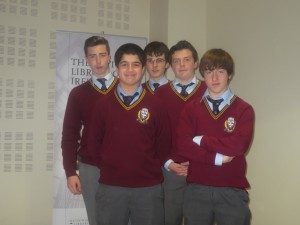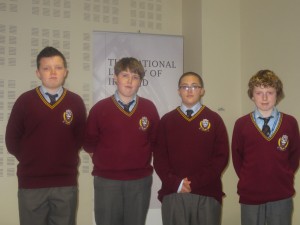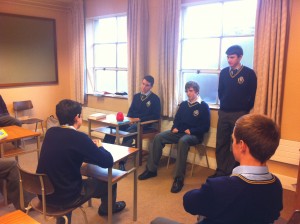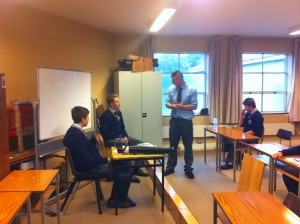Here’s a look at how to handle a Keats poetry exam question. You can see a model introduction and then some broad tips on how to plan the essay. A plan is just the bones – some flesh will be added in the next day or two.
LC HL 2009
Keats presents abstract ideas in a style that is clear and direct. Do you agree….
From my study of the poetry of John Keats, I am not surprised that many call him the finest English poet of the Romantic period. In many ways, his work is typical of his era. His themes reflect his deepest beliefs about what was important to him in life. Imagination, nature, strong emotions, love, death, transience, immortality are among the many abstract ideas with which his poetry is concerned. The manner in which Keats writes is often clear and direct as he creates verbal music in his sound effects, sensuous imagery that is tactile and aural. However, there are often times when his style can be challenging such as his use of paradoxes and antithesis to explore his themes. Therefore, I agree with this view of Keats’ work to a large but not full extent.
Now, you can approach this essay in one of two ways:
- Poem by poem:
Go through 4/5 of the six studied poems – one par or two paragraphs for each poem. As you discuss each poem – refer to one or two of the different abstract ideas mentioned in the intro and show how the style is clear / direct or not. If you are discussing one poem in each paragraph, make sure you link to another poem (perhaps the 6th poem, not being assigned its own paragraph) by way of a quote that shows a similar or different view/use of the theme/style being discussed. As always use words that show your personal response eg I was impressed with, I was challenged by, I enjoyed, I have often/never felt the same way about… I was pushed out of my comfort zone when studying… Keats’ use of x is striking… and so on.
- Theme by theme (or aspect of style by aspect of style):
Choose a different abstract idea according to the ones listed in the intro for each different paragraph. As you discuss each theme, refer to two or more poems that deal with it. Also show how Keats explores the idea – his style and comment on its clarity and directness (as the question requires). Again, include a personal element. As always keep the focus on the exact terms (or synonyms) of the question.
What is ultimately expected is that you show you know and understand Keats’ poetry thoroughly; and that you have thought about it and formed an opinion that you can justify and defend. Furthermore, you are being tested on how well you can interpret a question and apply your knowledge and understanding and opinion to what the question asks of you. (RTFQ and ATFQ J)
Now for two outlines – one following each approach:
- Poem by poem outline:
As always have a think about putting your paragraphs in a logical order that will create a flow to your thinking – and try to create smooth transitions between paragraphs.
Intro: (similar to above)
MB 1: Ode to a Nightingale
(Ask yourself: What abstract themes does this poem deal with and are those themes expressed in a clear and direct style?)
Abstract ideas – the imagination, transience, poetry, nature, mortality, death
Style – synaesthesia, sensuous imagery esp smell, allusion, contrast, changing tone
(Now ask yourself: How will I shape these points to suit my paragraph? OR: Which of these points will I use for my paragraph? OR: What will my paragraph topic be in relation to the question asked?)
MB 2: Ode to a Nightingale
Continue with points not used in MB 1.
Contrast this poem’s treatment of nature with its treatment in ‘La Belle Dame Sans Merci’
MB 3: To Autumn
Abstract ideas – beauty of nature v the harsh reality of death (transience, mortality)
Style – rich imagery – tactile, visual, aural; personification of Autumn, contrast, onomatopoeia + alliteration
MB 4: Ode on a Grecian Urn
Abstract ideas – immortality through art, permanence, transience, imagination, love (brief ref to LBDSM’s contrasting treatment of love)
Style – paradoxes + antithesis + ambiguities, contrast, assonance + sibilance
MB 5: To one who has been long in city pent
Abstract ideas – beauty of nature + its restorative powers, appreciation of literature (brief ref to ‘On First Looking into Chapman’s Homer), transience
Style: Changing tone, personification, allusion, alliteration + onomatopoeia
Conc – a crucial paragraph – shorter than main bodies – sum up – recap the main thrust of your essay and if possible leave the reader with a final thought-provoking comment on Keats and your opinion of his work in relation to this question.
- Theme by theme outline:
WARNING: Be careful not to repeat aspects of (or the same quotes from) the same poem in different paragraphs.
As always have a think about putting your paragraphs in a logical order that will create a flow to your thinking – and try to create smooth transitions between paragraphs.
Intro: (similar to above)
MB 1: Imagination; style – clear and direct or not
Think about which poems will help you with this – you can use one poem in this par and one poem in the next paragraph but comment on whether they have a similar or different approach.
Ode to a Nightingale
MB 2: Imagination; style – clear and direct or not
A second poem on this theme – Ode on a Grecian Urn
MB 3: Nature; style – clear and direct or not
To Autumn + To one who has been long in city pent + brief link to LBDSM as poem which treats nature differently
MB 4: Immortality / Death + Transience; style – clear and direct or not
Ode to a Nightingale + Ode on a Grecian Urn and To Autumn
MB 5: Love; style – clear and direct or not
LBDSM + Ode on a Grecian Urn
Conc – a crucial paragraph – shorter than main bodies – sum up – recap the main thrust of your essay and if possible leave the reader with a final thought-provoking comment on Keats and your opinion of his work in relation to this question.
More flesh will be added to these over the next day or two – but these pointers should be a good guideline in how to start looking at a Keats question. Happy studying!

